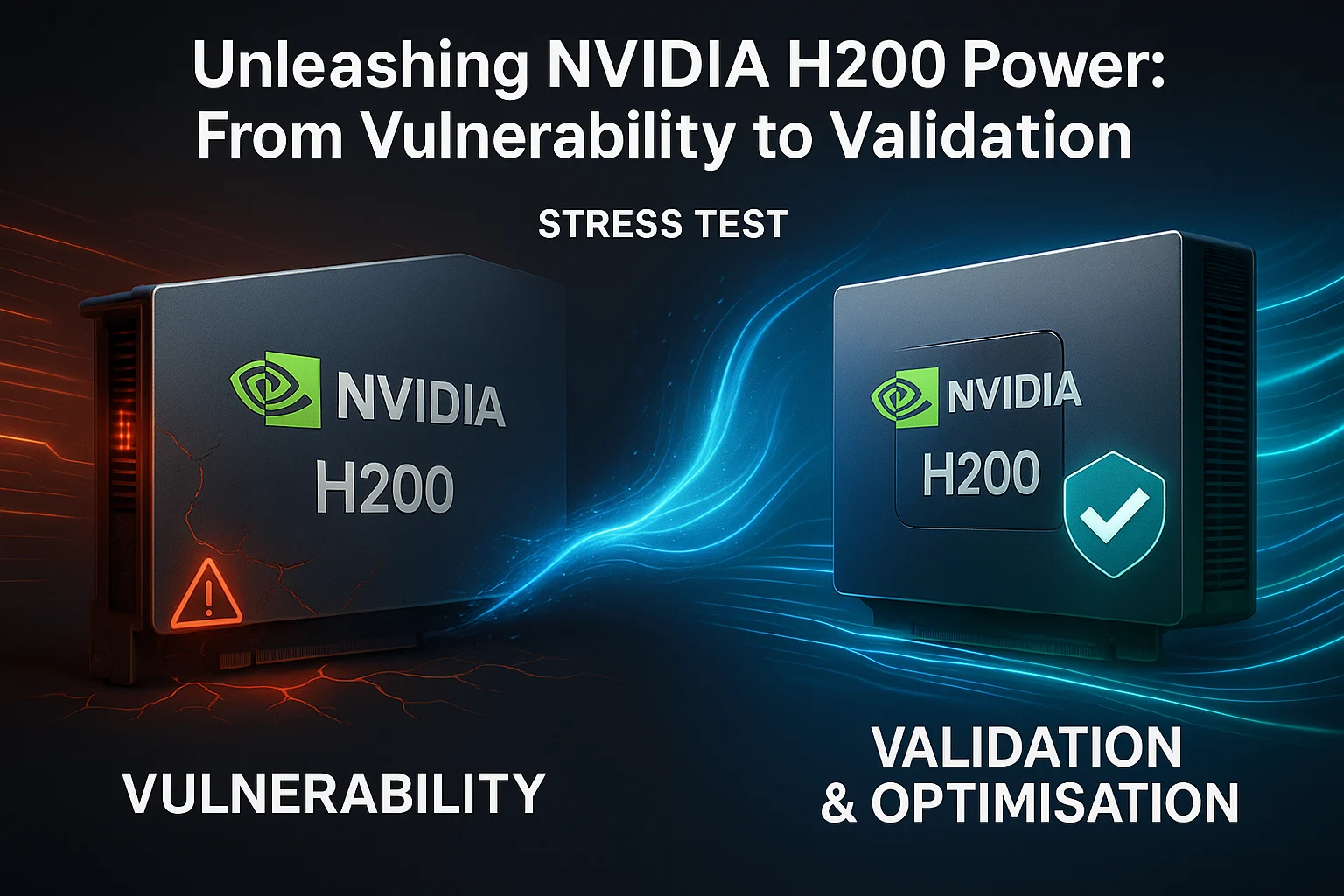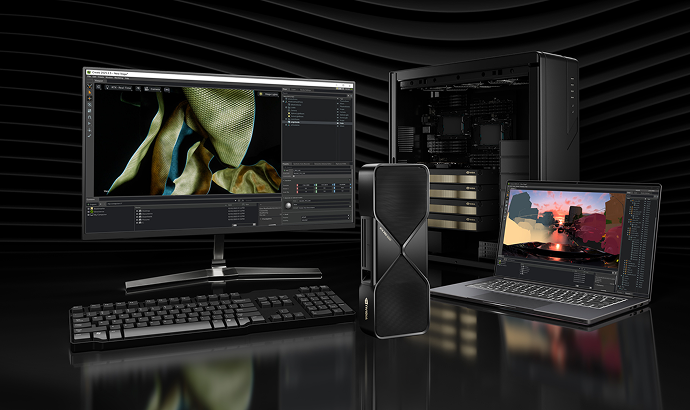

Writing About AI
Uvation
Reen Singh is an engineer and a technologist with a diverse background spanning software, hardware, aerospace, defense, and cybersecurity. As CTO at Uvation, he leverages his extensive experience to lead the company’s technological innovation and development.

A pre-flight stress test is non-negotiable for NVIDIA H200 installations because it proactively identifies and mitigates potential failures that only surface under real-world, high-load conditions. While initial setup might seem successful, critical issues like latency spikes during peak inference hours, thermal throttling, I/O saturation, or unexpected node reboots often emerge when the H200 is subjected to its intended, demanding workloads. Without this validation under pressure, organisations risk significant production downtime and suboptimal performance, even with premium hardware.
Skipping the stress test phase can lead to several critical issues in enterprise deployments. These include thermal throttling during sustained inference loads, failures in interconnects within multi-GPU environments, silent memory corruption during batch transfers, underutilisation of GPU cores due to driver mismatches, and unexpected reboots when faced with simultaneous compute and networking I/O. These problems typically manifest when Large Language Models (LLMs) are live and users are actively querying, leading to system crashes and service interruptions.
A comprehensive NVIDIA H200 pre-flight stress test involves a multi-dimensional diagnostic approach that assesses both hardware and software resilience. Key components include thermal load cycling to detect heat propagation issues, power spike simulation to ensure PSU stability, memory burn-in to identify bad VRAM blocks, I/O flooding to verify data integrity under parallel processing, and driver/container stack validation to catch version mismatches and resource leaks. Additionally, redundancy and failover testing is conducted in multi-node environments to eliminate single points of failure.
Uvation executes stress testing for H200 installations by deploying a full-stack pre-flight system designed for enterprise-grade LLM workloads. This involves using telemetry-aware test containers with synthetic workloads, simulating production-grade cluster I/O using technologies like GPUDirect RDMA, NCCL, and MPI, and benchmarking thermal maps, power draw charts, and response degradation curves. They also ensure the correct installation of MOFED, TensorRT, and CUDA toolkits and provide a detailed diagnostic report highlighting real stress points rather than just simple pass/fail outcomes. Their process validates hardware, drivers, network topology, and containerised deployments, as well as throughput under inference-heavy LLMs.
Stress testing has a significant and quantifiable positive impact on production performance. For example, recent H200 installations saw average LLM inference latency reduced from 490ms to 230ms, GPU utilisation increased from approximately 55% to over 92%, and power stability incidents decreased from 3.4 per week to zero. Furthermore, container restarts were eliminated, dropping from 8–10 per week to zero. Beyond preventing issues, stress testing reveals critical optimisation levers, leading to faster LLM responses, lower power draw per inference, and zero restart downtime in production.
A pre-flight stress test specifically identifies issues that do not show up in idle or standard benchmarking modes. These include thermal throttling during extended inference loads, interconnect failures in multi-GPU setups, subtle memory corruption during batch transfers, underutilisation of GPU cores due to driver inconsistencies, and unexpected system reboots triggered by simultaneous compute and networking I/O. These problems are typically only exposed when the LLM is live, under full user load, and the GPU is pushed to its limits, making a stress test essential for real-world reliability.
The target audience for information regarding NVIDIA H200 pre-flight stress testing includes a range of technical and strategic professionals involved in AI and infrastructure. This encompasses Infrastructure Architects, Machine Learning Engineers, Chief Information Officers (CIOs), and AI Platform Teams. These roles are directly responsible for the design, deployment, optimisation, and operational stability of advanced AI infrastructure, making them keenly interested in methodologies that prevent downtime and enhance performance.
The final takeaway is that a pre-flight stress test is an absolute necessity for NVIDIA H200 deployments. While the H200 is designed for unmatched performance, this potential can only be fully realised if the underlying system can robustly handle intense workloads. Just as a pilot would never skip a pre-flight check, AI teams should not skip this crucial validation phase. Without it, even the most ingenious models and premium infrastructure represent grounded potential, significantly increasing the risk of live LLM failure. It ensures an architecture-first readiness that de-risks the entire installation.
We are writing frequenly. Don’t miss that.
